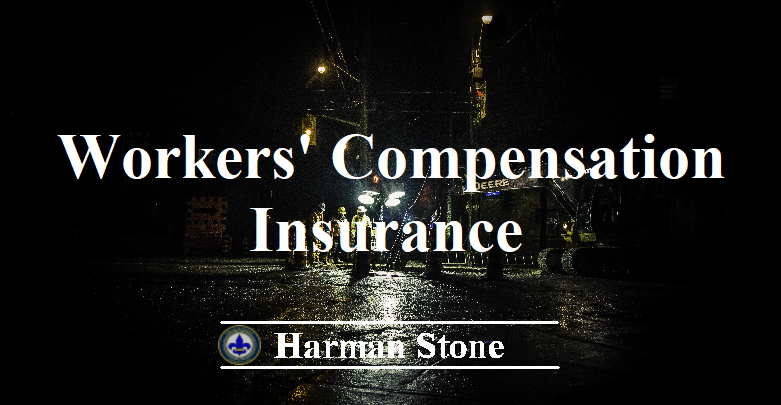By M. L. Houseal
Marketing Strategic Consultant
Harman Stone Corporation
Most of us in small business management have had to grapple with the “opportunity” of the problem employee we’d like to keep, but we’re reluctant to deal with the worker’s baggage and habits. We don’t see a workable solution. We call it reluctance but just maybe . . . is it the fact that we’re unprepared?
In the real world, we call a problem a problem.
In the small business management world, we’re supposed to call it an “opportunity.”
But for what? Constructive change? A breakthrough of some kind? A new way of looking at our business?
The disciplinary process in many small businesses is a poorly-documented, reactive, shoot-from-the-hip affair. For far too many of these businesses, the end game is the imposition of penalties leading eventually to termination. The imposition of punitive measures is viewed as the end objective, but that’s destructive, not productive.
If you see yourself and your employee disciplinary habits described above, let’s consider a new way of thinking, based on some fundamentals we’ll address below.
How important is this process, really? Consider this fact: Statistically, most cases going to EEOC arbitration have involved discipline. Do you need to get it right? You bet. Employees have rights protected by both state and federal laws, and it will pay to be aware of your state’s position on “employment at will”. The most permissive system allows for termination for good cause, questionable cause, or no cause at all. Some states require provable, or documented, cause for termination.
The Profile of the Problem Employee
Problem employees most often fall somewhere within a fairly finite group of categories, based on causative factors that result in deficient or disruptive performance.
There are:
- Non-performing or under-performing workers;
- Addicted or substance-abusing employees;
- Workers engaged in theft, fraud or other criminal acts against the employer and/or customers; and
- Chronic and habitual rule-violators.
Causative factors in the cases above range from deficient job knowledge or deficiency in intelligence, through emotional and motivational problems, and on to influences from both outside and inside your company. An under-performing worker may be facing family problems or may be steeped in a social or cultural mindset that makes the worker unsuitable for certain employment. It takes sharp observation to recognize the differences, and a cautious approach to addressing them.
The issues related to non-performing or under-performing workers can usually be peeled down to deficiency in motivation, in training or in the skills necessary to leverage the training into proper performance. It’s up to the employer to apply the proper solution as part of the progressive discipline process. Willful non-performance as a choice is a matter for counseling and, if it continues, documented termination. Little else will help. Otherwise, continued training or perhaps one-on-one mentoring by a more capable worker is appropriate.
Addicted or substance-abusing employees are thought to represent as much as 12% of the American workforce, costing as much as $200 Million each year in lost productivity and other expenses. Substance abuse is also indicated as one of the leading causes of workplace violence. In some studies, drug and alcohol-addicted workers have an absenteeism rate more than 2 ½ times that of non-addicted workers. Further analysis has shown drug-abusing employees are 1/3 less productive, have more than 3 times the number of workplace accidents, and make 5 times as many Workers Comp claims as those who don’t use drugs.
Drug testing is increasingly applied as a condition of employment on application, and in each and every workplace accident. Drug tests are currently estimated to be used in more than 65% of the larger workplaces, and small business employers are slowly getting on board the idea. (See the link to our Trending Topics on Drug Testing.) Encouragingly, more than 75% of full time workers see no issue with privacy in employer drug testing.
Many small businesses choose to outsource an Employee Assistance Program (EAP) for the constructive management of addiction problems, as well as some mental health issues. This approach means a partnership with specialists who are skilled in the “constructive confrontation” process in which help is offered as a condition of continued employment in an “admit, accept, address, change or leave” cycle.
When workers are engaged in theft, fraud or other criminal acts, small business employers and HR managers can choose from a variety of responses. Theft, fraud and other “internal shrink” issues cost an estimated $600 Billion per year, a staggering amount. In small businesses, these activities have a considerably greater negative impact than they do on large corporate operations. The illegal acts range from simple theft, misuse of company facilities or property, disclosure of trade secrets, embezzlement, sabotage, and the diversion of company equipment and financial mechanisms for personal use. Identification of the problem in a small business requires careful application of HR best practices coupled with criminal referrals. But as in any progressive discipline matter, documentation and the application of reasonable measures in a consistent way is the best course of action.
The chronic and habitual rule violator presents the most dangerous problem of all, because such individuals statistically are far more likely to cause or be involved in workplace violence. Just as great is the probability that the worker will suffer or cause workplace injury to others, because in most businesses, the core of the workplace rules is safety.
Before action can be taken, the employer must ensure that:
- Rules are documented, not just passed verbally in the business as common knowledge, and that
- Rules are evenly and consistently applied, with situational exceptions provided for in documentation as well.
Applying a Progressive Disciplinary Process
With the classes of disciplinary issues set forth, it then becomes the job of the business owner or HR manager to identify the performance problem, and apply the Progressive Discipline Model to modify behavior and constructively work through the problem with the employee.
The steps are simple and straightforward, based on 4 principles:
- Discipline must be progressive, in ascending degrees of action.
- Discipline must be timely.
- Discipline must be oriented toward behavior modification.
- Discipline must be documented and consistently applied.
First, there should be a logical progression of actions, which in most business environments means:
- Verbal Warning, followed by
- Second Verbal Warning and private counseling or coaching, followed by
- Initial Written Warning and Counseling, followed by
- Second and Final Written Warning.
On continued violation, immediate suspension or termination is warranted. In all cases, file documentation (notes or more formal documentation) should be appended to the worker’s record, and in the cases of Written Warnings, it is prudent to request that the worker sign or initial the document to indicate recognition and understanding, but not necessarily agreement.
A second consideration is crucial to the effective process: Disciplinary action must be timely, as soon as is practical after the infraction has been noted or witnessed. The passage of days or weeks between discovery and confrontation will weaken the process, and remove the sense of immediacy. Unpleasant as it might be, the culture of “address it now” should prevail.
When the issue is addressed and each step is applied, the small business owner should keep a goal in mind: The object of the process is retention of the worker and modification of behavior to create and nurture a productive work environment. Tempting as it might be, the disciplinary process is not an excuse to inflict punishment or give vent to resentments that may be more personal than productivity-related. Remember: “It’s not personal. It’s business.”
Finally, real care should be taken to document each step above, and the degree of formality is really up to the small business owner as a system is adopted that serves the business. Notes and forms are fine, but resist the urge to over-complicate the process. The goal of documentation is the creation of an accurate narrative that will stand scrutiny, particularly if a worker escalates the issue and approaches EEOC or submits to arbitration. The file and the paper trail it contains helps immeasurably to guide and manage the process.
A productive workplace is every small business owner’s desire. Facing the sometimes unpleasant task of disciplining and guiding the behavior of those who threaten that order and productivity is difficult, but a fundamental management and ownership responsibility. Armed with the proper tools, the small business owner can much more easily fulfill that responsibility, and help bring workers to their next level of productivity.
* For an evaluation of your disciplinary process, and to start a dialogue with us to help manage it more effectively, contact Harman Stone by clicking on the “Contact Us” Link on our Home Page, and giving us your contact information. Harman Stone does not share client or prospect contact information with third parties.
"Driving Positive Outcomes for Small Businesses"
General Request for Information
Speak with a Harman Stone Associate.
We’re very eager to be of service to you. Please provide details below.










